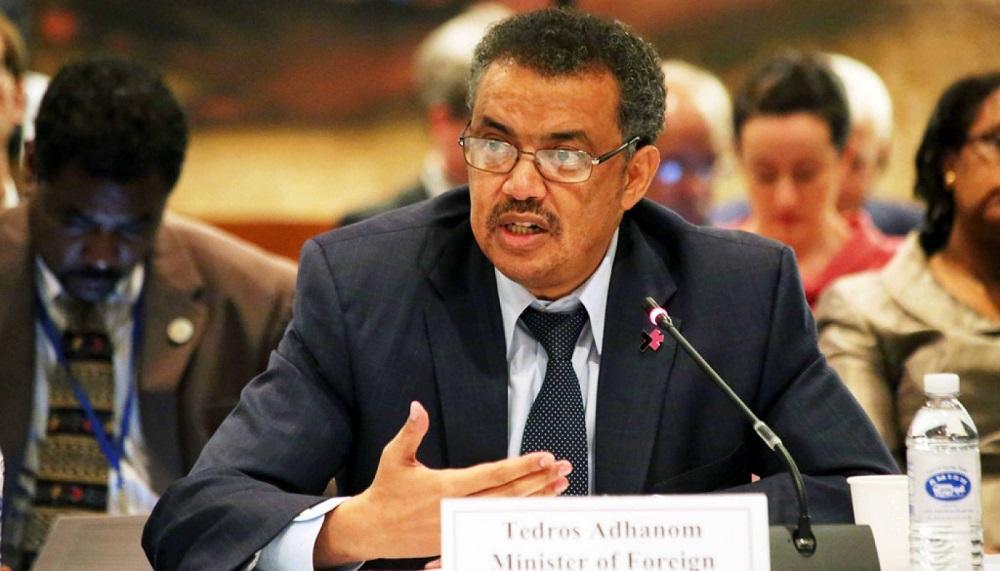The Director-General, World Health Organisation, Tedros Ghebreyesus, has called for more commitment from member states to end Tuberculosis as COVID-19 continued to impact TB care globally.
Ghebreyesus made the call in his remarks at the high-level event: “Global drive to scale up TB prevention’’ on Wednesday.
In his speech on the WHO website, the director-general said an estimated 1.4 million fewer people received care for TB in 2020, which is 21 percent less than in 2019; this disruption could cause an additional half a million deaths.
“While vaccines are now giving the world hope of ending the COVID-19 pandemic, we don’t have an effective vaccine for TB but we do have tools to prevent people at high risk of TB from developing the disease.
“This includes preventive treatment, which reduces the risk of disease by up to 90 percent and can provide years of protection against both TB and the risk of premature death for people with HIV.

“It can also prevent hospital visits and protect families and communities against catastrophic costs, but globally we are not using this tool as effectively as we could.
“Although the numbers of people receiving this life-saving intervention have quadrupled since 2015, it’s not enough.’’
According to him, TB remains one of the leading infectious killers globally, and the leading cause of death among people living with HIV.
The director-general said despite being a preventable, treatable and curable disease, TB killed more than 1.4 million people each year and affects millions more, with enormous impacts on families and communities.
“Ending this debilitating disease remains a priority for WHO, and in recent years, we have made encouraging progress globally.
“More than 20 million people received access to TB services over the past two years, almost five million more than the previous two years.
“109 countries have started using new effective TB drugs, while 89 countries reported using better and faster treatments for multidrug-resistant TB, in line with updated WHO treatment guidelines.
“But the COVID-19 pandemic has put these gains at risk; not only does the virus pose an increased risk to people with TB, but it has also caused severe disruption to services,’’ he said.
In 2018, Ghebreyesus said member States at the UN High-Level Meeting on Tuberculosis made bold commitments to provide TB preventive treatment to at least 30 million people by 2022.
“This included 24 million contacts of people with TB, and six million people living with HIV.
“While we are on track to meet the target for people living with HIV, we are falling far short in reaching contacts of people with TB.
“By 2020, less than 10 percent of the target was reached.
“If we are to achieve the UN High-Level meeting targets for TB preventive treatment in the 18 months left, we need to act with urgency,’’ the director-general said.
To achieve the target, he said, it would require providing TB preventive treatment to at least three contacts, on average, for every TB patient detected.
“To achieve this, we need three things: first, we need to scale up preventive treatment for household contacts of people with TB, including children, alongside efforts to find people with TB disease among people living with HIV.
“We must pay special attention to settings with a high prevalence of undetected TB, such as informal settlements and prisons.
“Second, we call on Ministries of Health to scale up access to primary health care and community-based services to reach the household of every TB patient.
‘This will also require investments in WHO-recommended technologies to screen, test and provide care for affected households.’’
Third, the director-general said all stakeholders needed to work together to build the capacity of health workers and health systems on the use of TB preventive treatment, and to overcome hesitancy.
“We have a lot of work to do, but it can be done; we have shown that, by reaching our treatment coverage target of six million people living with HIV, well ahead of 2022.
“Successes such as these must strengthen our resolve to reach all contacts and other populations in need of TB preventive treatment.
“New technologies like digital radiography, computer-aided detection and molecular diagnostics offer the opportunity to do better for less,’’ he said.
As we sprint towards the 2022 targets set by the UN High-Level Meeting, the director-general reminded member states that the struggle to end TB is not just a struggle against a single disease.
“It’s also the struggle to end poverty, inequity, unsafe housing, discrimination and stigma, and to extend social protection and universal health coverage.
“If the pandemic has taught us anything, it’s that health is a human right, not a luxury for those who can afford it; with solidarity, determination and the equitable use of tools, we will defeat COVID-19.
“And with the same solidarity, determination and equitable use of tools, we can end TB,’’ he said.
(NAN)












